[Photo essay] Why we must travel India to really understand it
![[Photo essay] Why we must travel India to really understand it [Photo essay] Why we must travel India to really understand it](https://akm-img-a-in.tosshub.com/sites/dailyo/story/header/201506/1hmjaipur_063015124142.jpg)
We are so psyched we cannot sleep.
The truth about this journey is, in fact, inscribed in the peculiar grainy feel of the bare hours. We spend these hours in strange rooms where we are not supposed to get attached to bedsteads or shelves, in the silence that engulfs us when we are neither talking to each other nor to other people. Or there are the other kind of hours - hurtling along roads where the eye processes a rush of images and files them away somewhere: pigtailed girls in school uniforms, trees shedding leaves, thin dogs sleeping in the sun, clothes fluttering on flat terraces, ruins of a fort in the distance, all viewed from broken windows of long-distance buses. These bare hours are just as important as the busy ones filled with stories and trekking and photography and conversation, and far more numerous. They leak out of us at night when we sleep and swirl around our heads as we bathe.
 |
| The Heat and Dust Project: The broke couple's guide to Bharat; HarperCollins India; Rs 162. |
Sometimes, bare hours suck. They leave us lean and wasted on beds, fighting each other, questioning the very vanities that propelled this project. Everything seems fraudulent, the past, the present - the elaborate narratives about our lives. Sometimes the bare hours oscillate neatly between fear number one, that authenticity is impossible to achieve, and fear number two, that we are but the reversed reflections of our friends and batchmates in office rooms and university labs, so though we claim we have left these lives behind, essentially, except for a few details, we are as insubstantial as mirror images. And then, there are finally the obscure, contented sunny hours, poised on hope. That ultimately we shall discover meaning; that the conversations we have with people and the conversations we eavesdrop on will help us understand the country, and ourselves, better; that later, buoyed by our sublime lessons on the road, we shall become better people, better citizens, better writers.
That we might learn to speak of the nation, not like the studio experts we so detest, but like humble, sensitive, new post-global Indians.
(Do note, that of all these, it is this last that is embarrassing to admit in print. Much cleverer to admit to the haunting pull of ennui and failure and terror of the future, than confess to the earnest optimism of national ideals. And yet, if that too is not the truth, what is?)
a) We took a bus to Jaipur from Delhi, and ended up staying the night in the seediest of seedy hotels. But then there was Hawa Mahal, and a sudden rush of memories, before we took a bus to Pushkar.
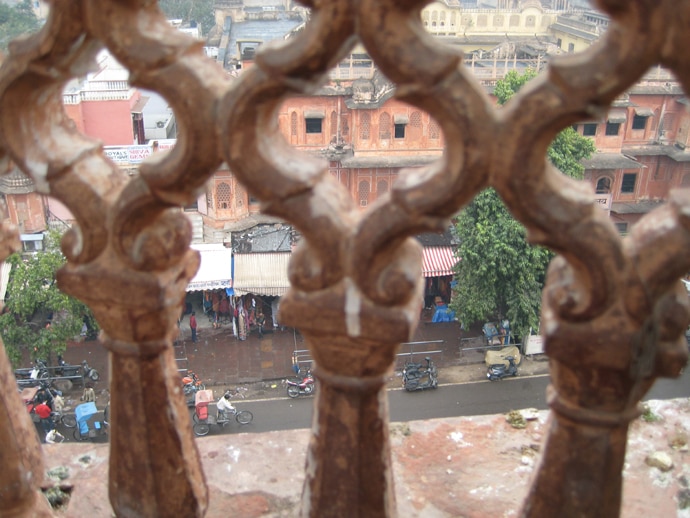 |
b) Pushkar-1: The Queen Mary Zenana Ghat, our favourite, with its portmanteau summation of Indian history, and the quiet lap lap lapping of water one can hear sitting under the white arch.
 |
c) Pushkar-2: D was most tempted to see if Biharis got a discount too. But the budget did not allow for check-ups, alas.
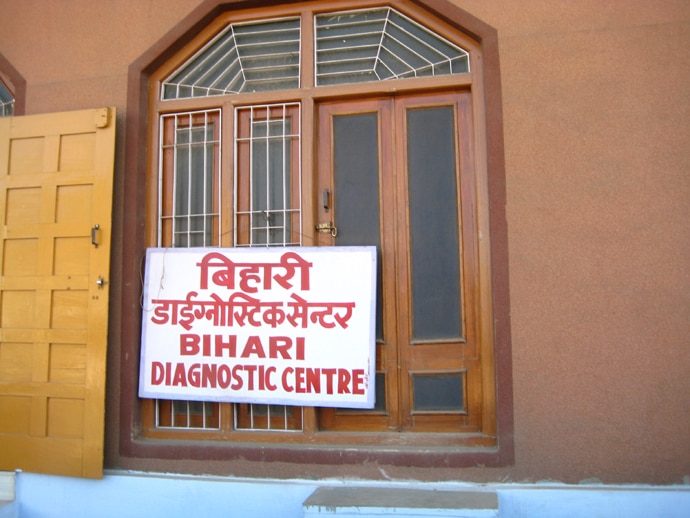 |
d) Pushkar-3: Ditto for aerobics classes at the Nav Hanuman Gymnasium (no budget, that is.)
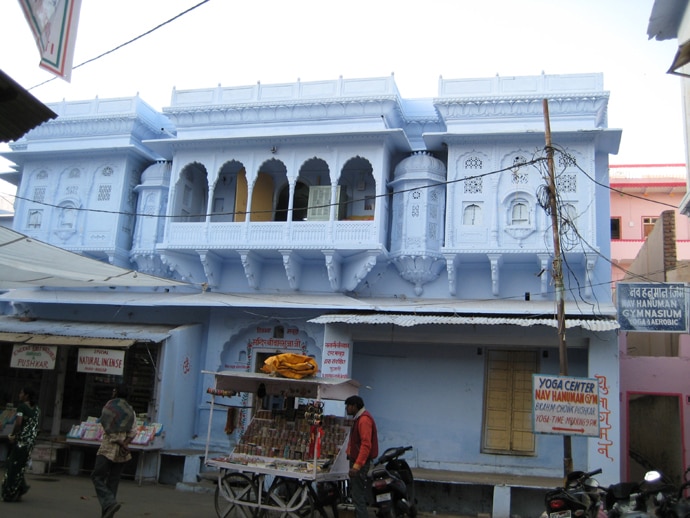 |
e) Borunda (on the way to Jodhpur)
 |
f) Brahmpuri in old Jodhpur, where we stayed in a old haveli converted into a hotel by Mr Joshi, whose post post-colonial kahaani is recounted at some length in the book.
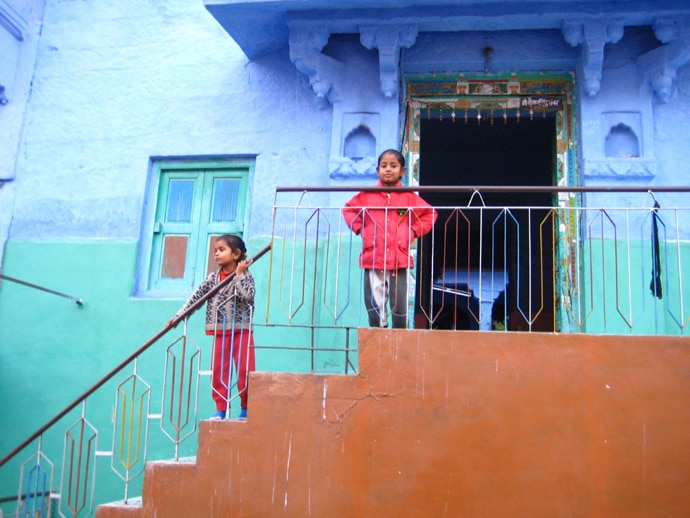 |
g) Sometimes at night, in old Jodhpur, on our wanderings we met…
 |
h) Late afternoon, Jaisalmer (or just-after-we-nearly-called-it-off)
 |
i) 'It's All Geek to D':
"'What is that?' you ask. He looks at you, stunned. As though it is supremely weird you don't know what it is. 'It's an M-46,' he says, finally. 'Isn't it beautiful?' You are confounded by the choice of word. Blocking the way is a giant olive-green mechanical device with humongous tractor wheels and barrels that stick out."
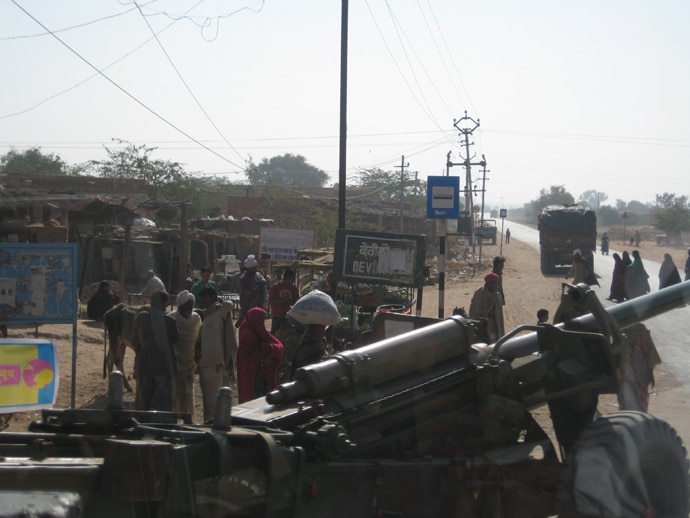 |
'How to Survive Madna'
j) The day before Uttarayan we reached Palanpur (Gujarat). Everyone was busy kiteshopping.
 |
k) Uttarayan at the Sabarmati Ashram, Ahmedabad.
 |
l) At the Ahmedabad Station. A lone sadhu on his way to the Kumbha Mela in Haridwar.
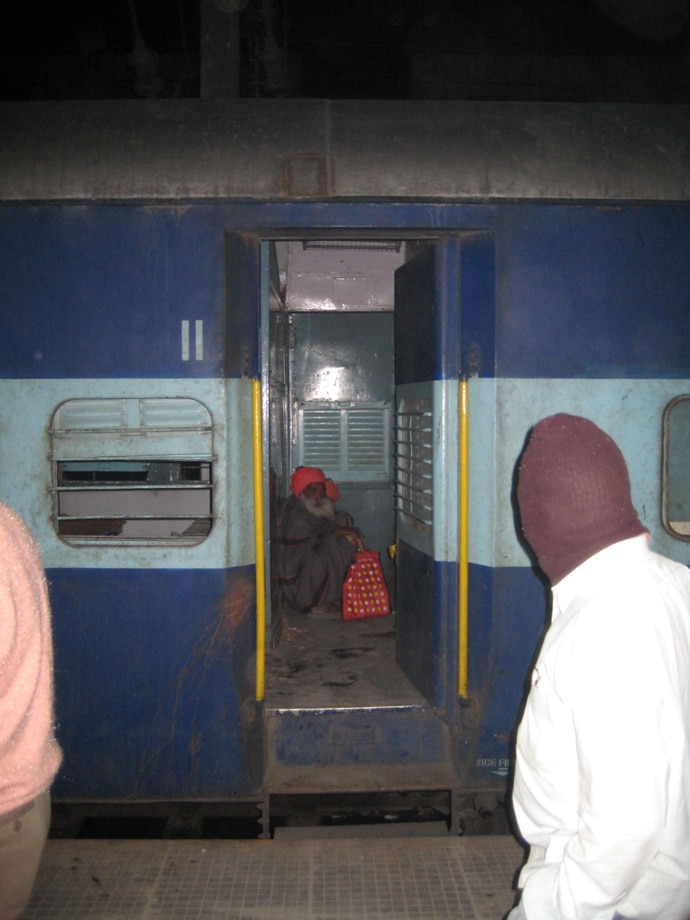 |
m) Pirs swathed in green silk at the Juma Masjid in Uparkot, Junagadh
'Since almost the early days of Islam's entry into the subcontinent, there has been a mystic trail stretching from Mansura in Sindh to Uparkot in Girnar for Sufis. Sufis believe in undertaking sadhana which will keep them at the "Chautha Aasman" that corresponds to the Anahata or Heart Chakra, fourth in order from the base of the kundalini.'
 |
Saurav, How (Not) To Get Late For Girnar
n) Motty and Zvika Hillel, with whom we perfected the Paharganj posture, at India Gate, New Delhi.
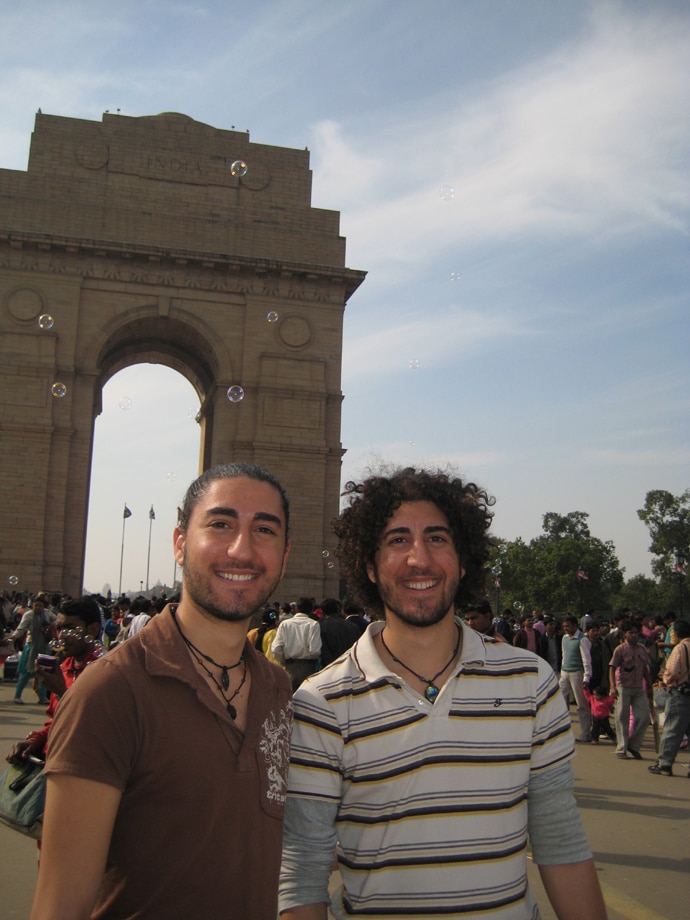 |
o) The many pleasures of Mathura
 |
p) In Search of Radha: Barsana -1
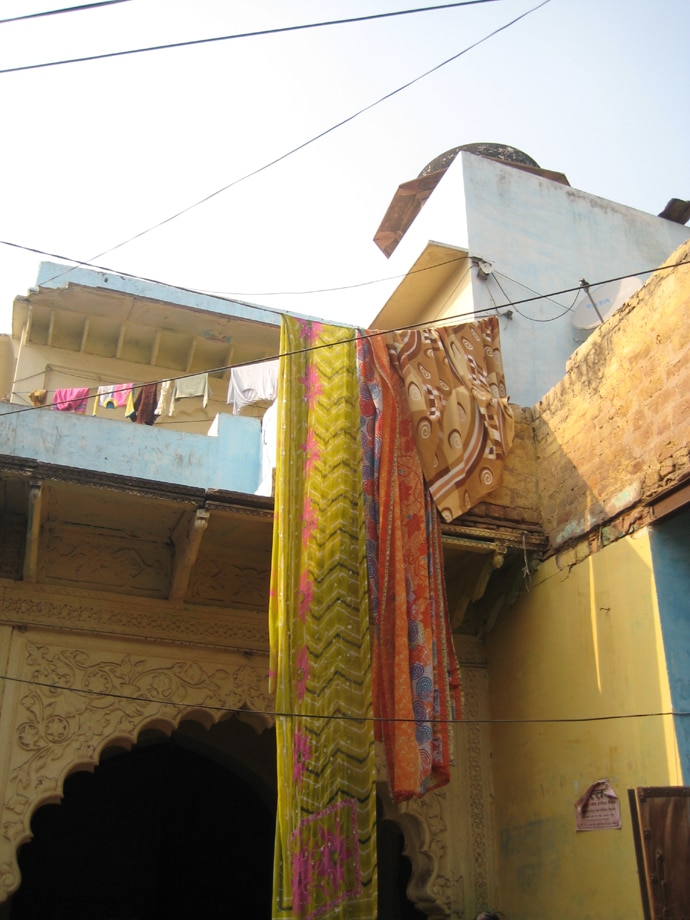 |
q) In Search of Radha: Barsana -2
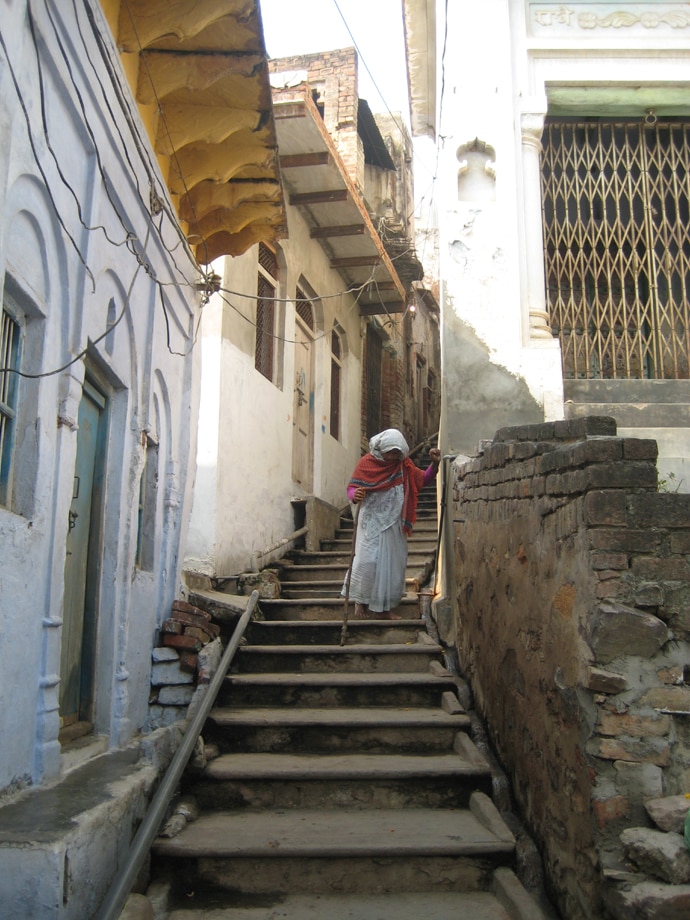 |
r) Dharamshala
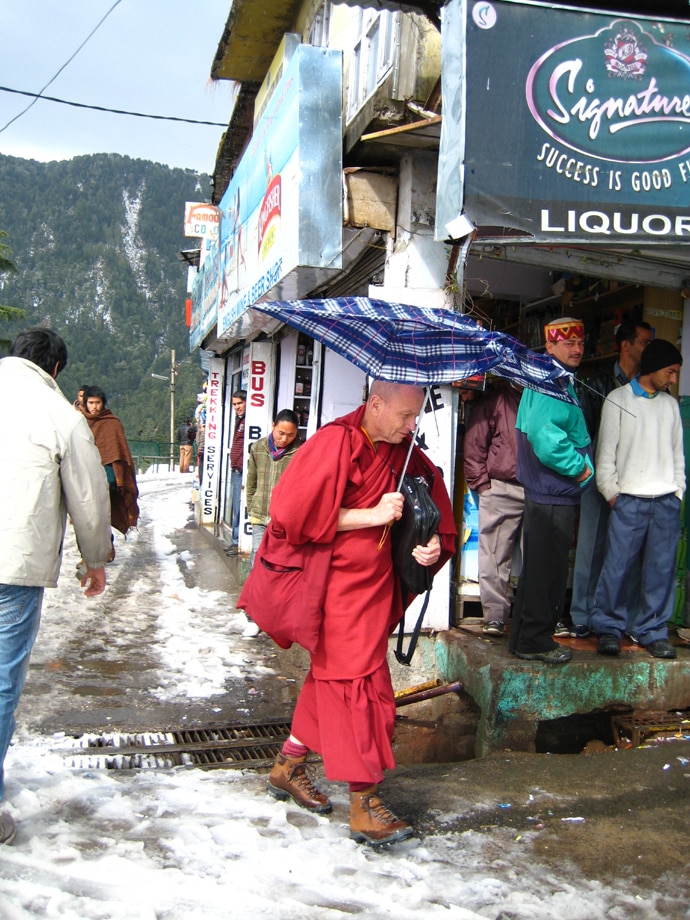 |
(This excerpt has been published with permission from HarperCollins India.)

